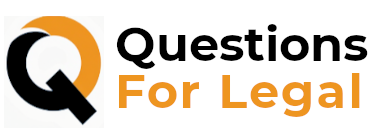Public intoxication is a topic that sparks curiosity and raises important questions about personal behavior, public safety, and legal considerations. Understanding what constitutes public intoxication and being aware of the associated laws is crucial in navigating social situations responsibly.
Table of Contents
- Definition and overview of public intoxication
- Importance of understanding public intoxication laws
- Understanding Public Intoxication
- Laws and Penalties
- Signs and Symptoms of Public Intoxication
- Intervention and Dealing with Public Intoxication
- Challenges and Controversies
- Final thoughts
Definition and overview of public intoxication
Public intoxication refers to a state in which an individual’s consumption of alcohol or drugs impairs their physical and cognitive abilities to the extent that it poses a risk to themselves or others in a public setting. It typically involves being visibly intoxicated or behaving in a disruptive or disorderly manner due to substance use. While the specific definition may vary across jurisdictions, the underlying premise remains consistent: public intoxication involves being under the influence of substances in a public space.
Understanding the definition of public intoxication is essential because it helps individuals recognize and identify situations where their behavior might be perceived as a public safety concern. It serves as a guideline for both individuals and law enforcement to assess and respond appropriately to instances of public intoxication.
Importance of understanding public intoxication laws
Familiarity with public intoxication laws is crucial for everyone, whether you are a frequent social drinker, a concerned citizen, or someone working in the public safety sector. These laws establish the legal boundaries that dictate how public intoxication is addressed and the consequences that may follow.
By understanding public intoxication laws, individuals can make informed decisions about their own behavior and ensure they do not unintentionally violate any regulations. It helps create a safer environment for everyone involved by encouraging responsible drinking habits and discouraging disorderly conduct in public spaces.
Moreover, knowledge of public intoxication laws empowers individuals to protect their rights and seek appropriate legal remedies if they believe they have been wrongly accused or mistreated in relation to public intoxication. Understanding the law fosters a sense of accountability and helps individuals navigate potential legal issues with greater confidence and clarity.
Understanding Public Intoxication
Public intoxication is a complex issue that involves various elements, including the definition of intoxication, distinguishing between public and private intoxication, and understanding the factors that contribute to public intoxication. In this blog post, we will delve into these aspects to provide you with a better understanding of this topic.
Definition of intoxication
Intoxication, in the context of public intoxication, refers to a state in which a person’s mental and physical faculties are impaired due to the consumption of alcohol or drugs. It goes beyond mere indulgence and crosses the line into a state where one’s judgment, coordination, and behavior are significantly compromised. The effects of intoxication can vary from mild impairment to severe incapacitation, depending on the individual and the substances involved.
By understanding the definition of intoxication, we can appreciate the potential risks and consequences associated with being intoxicated in public. It serves as a reminder that responsible alcohol and drug consumption is essential for maintaining personal well-being and public safety.
Differentiating between public and private intoxication
Distinguishing between public and private intoxication is crucial as it helps establish the context in which intoxication occurs and the subsequent actions that may be taken. While private intoxication typically refers to being intoxicated within the confines of one’s home or another private property, public intoxication occurs when an individual’s impaired state is manifested in a public setting.
Public intoxication often involves behavior that is disruptive, disorderly, or poses a threat to the individual themselves or others around them. It is the observable manifestation of intoxication that leads to potential legal and social implications.
Differentiating between public and private intoxication enables us to recognize the appropriate responses and interventions needed in each scenario. It helps law enforcement officers determine whether intervention is necessary, and it guides individuals in understanding the boundaries of acceptable behavior in public spaces.
Factors contributing to public intoxication
Public intoxication can be influenced by various factors, including social, psychological, and environmental elements. Understanding these factors helps shed light on why individuals may engage in public intoxication and the underlying causes behind their behavior.
Social factors such as peer pressure, cultural norms, and the availability of alcohol or drugs can contribute to public intoxication. Psychological factors, such as stress, mental health issues, or a desire for escape, may also play a role. Additionally, environmental factors like nightlife culture, accessibility to bars or clubs, and celebrations or events can contribute to the prevalence of public intoxication.
By recognizing the factors that contribute to public intoxication, we can address the issue from a multifaceted perspective. It allows us to implement strategies and interventions that tackle the root causes and work towards creating a safer and more responsible drinking culture.
Laws and Penalties
Public intoxication laws serve as a framework for regulating and addressing instances of intoxication in public spaces. In this blog post, we will explore the laws surrounding public intoxication, the varied approaches to regulation, and the common penalties and consequences associated with this offense.
Overview of public intoxication laws in different jurisdictions
Public intoxication laws can vary from one jurisdiction to another, as they are influenced by local legislation, cultural norms, and societal attitudes towards substance use. While the specifics may differ, the underlying principle remains consistent: to prevent behaviors that endanger public safety or disturb the peace due to intoxication.
By providing an overview of public intoxication laws in different jurisdictions, we can understand the legal framework in which this offense is addressed. It highlights the importance of being aware of the specific regulations that apply to your location, as ignorance of the law is not a valid defense.
Varied approaches to public intoxication regulation
Public intoxication regulation is approached differently across jurisdictions and can vary in terms of enforcement, prevention, and intervention strategies. Some jurisdictions focus on punitive measures, while others adopt a more rehabilitative or harm reduction-oriented approach.
Exploring the varied approaches to public intoxication regulation sheds light on the diversity of perspectives and strategies employed to address this issue. It highlights the need for a balanced approach that considers both public safety and the well-being of individuals struggling with substance use.
Common penalties and consequences for public intoxication
Public intoxication offenses typically come with penalties and consequences that aim to discourage such behavior and maintain public order. While the specifics may differ, common penalties may include fines, mandatory alcohol or drug education programs, community service, probation, or even short-term incarceration.
Understanding the potential penalties and consequences for public intoxication serves as a deterrent and encourages responsible behavior. It emphasizes the importance of making informed decisions and exercising self-control when consuming alcohol or drugs in public spaces.
Signs and Symptoms of Public Intoxication
ecognizing the signs and symptoms of public intoxication is essential for identifying situations that may pose a risk to individuals and public safety. In this blog post, we will explore the observable signs, behavioral indicators, and physical and cognitive impairments associated with public intoxication.
Observable signs of public intoxication
There are several observable signs that can indicate a person is intoxicated in a public setting. These signs may include slurred speech, unsteady or impaired coordination, bloodshot or glassy eyes, flushed face, or a strong smell of alcohol. Other indicators can include difficulty standing or walking, stumbling, or swaying. These visible signs serve as cues to identify individuals who may require assistance or intervention.
Recognizing observable signs of public intoxication allows us to take appropriate action, such as seeking help for the individual or ensuring their safety, and potentially preventing further harm or risk to themselves or others.
Behavioral indicators of public intoxication
Behavioral indicators play a significant role in identifying public intoxication. Individuals under the influence of alcohol or drugs may exhibit behaviors that are out of character or disruptive. These can include being loud or excessively talkative, displaying aggressive or confrontational behavior, engaging in disorderly conduct, or causing disturbances in public spaces.
Being aware of these behavioral indicators helps us distinguish between someone who is simply enjoying themselves and someone whose behavior may pose a risk to themselves or others due to intoxication. It allows us to respond appropriately, whether it involves intervening, seeking help, or notifying the authorities when necessary.
Physical and cognitive impairments associated with intoxication
Intoxication affects both physical and cognitive functioning. Physically, individuals may experience reduced coordination, impaired motor skills, and slowed reflexes. They may have difficulty maintaining balance or exhibit unsteady movements. Cognitive impairments can include poor judgment, decreased inhibitions, confusion, impaired decision-making, or difficulty concentrating.
Understanding the physical and cognitive impairments associated with intoxication helps us comprehend the potential risks individuals may face in public spaces. It also helps us empathize and respond appropriately, taking into consideration their compromised abilities and the potential dangers they may face.
Intervention and Dealing with Public Intoxication
Effectively addressing public intoxication requires a comprehensive approach that involves various stakeholders, including law enforcement, community organizations, and healthcare professionals. In this blog post, we will explore the role of law enforcement in handling public intoxication incidents, protocols for addressing public intoxication in public spaces, and alternatives to criminalization through diversion programs and medical interventions.
Role of law enforcement in handling public intoxication incidents
Law enforcement plays a crucial role in managing public intoxication incidents. They are often the first responders called upon to assess the situation and ensure public safety. Law enforcement officers are trained to recognize signs of intoxication, de-escalate potentially volatile situations, and make informed decisions regarding appropriate interventions.
By understanding the role of law enforcement in handling public intoxication incidents, we can appreciate their responsibilities and the challenges they face. It highlights the importance of effective communication, empathy, and the use of appropriate protocols to ensure the safety and well-being of everyone involved.
Protocols for addressing public intoxication in public spaces
Protocols for addressing public intoxication in public spaces may vary depending on the jurisdiction and local policies. These protocols typically involve assessing the level of intoxication, ensuring the individual’s safety, and determining the appropriate course of action. This can include offering medical assistance, providing transportation to a safe location, connecting individuals with support services, or taking legal action if necessary.
Understanding the protocols for addressing public intoxication helps promote consistency and fairness in the way these incidents are handled. It emphasizes the importance of a balanced approach that considers the well-being of individuals struggling with substance use while also maintaining public safety.
Alternatives to criminalization: diversion programs and medical interventions
Recognizing that criminalization may not always be the most effective response to public intoxication, there are alternatives that focus on diversion programs and medical interventions. Diversion programs aim to provide individuals with access to substance abuse treatment, counseling, or educational programs as an alternative to incarceration. These programs focus on rehabilitation and addressing the underlying causes of substance use.
Medical interventions, such as outreach teams or specialized units, can provide immediate medical care and support to individuals experiencing public intoxication. These interventions prioritize the health and well-being of individuals and aim to connect them with appropriate resources for ongoing care and support.
Exploring alternatives to criminalization demonstrates the importance of a compassionate and health-centered approach to public intoxication. It emphasizes the potential for positive change and long-term solutions by addressing the root causes of substance use and providing individuals with the support they need.
Challenges and Controversies
Addressing public intoxication involves navigating various challenges and controversies that surround this complex issue. In this blog post, we will explore the debates surrounding the criminalization of public intoxication, the disproportionate impact on vulnerable populations, and the delicate balance between public safety and personal liberties.
Debate surrounding the criminalization of public intoxication
There is an ongoing debate regarding the criminalization of public intoxication. Some argue that treating public intoxication as a criminal offense may not be the most effective or compassionate approach. They suggest that alternative strategies, such as diversion programs or medical interventions, could be more beneficial in addressing the root causes of substance use and promoting rehabilitation.
On the other hand, proponents of criminalization argue that it serves as a deterrent and helps maintain public order and safety. They believe that holding individuals accountable for their behavior through legal consequences is necessary to protect the community and prevent potential harm.
Understanding the debate surrounding the criminalization of public intoxication highlights the need for thoughtful consideration of the consequences and implications of various approaches. It encourages open dialogue and the exploration of innovative solutions to this complex issue.
Disproportionate impact on vulnerable populations
Public intoxication laws and their enforcement can have a disproportionate impact on vulnerable populations, including individuals experiencing homelessness, those with mental health issues, or marginalized communities. These populations may face increased scrutiny, profiling, and harsher penalties due to systemic biases or limited access to resources.
Recognizing the disproportionate impact on vulnerable populations is crucial in addressing the underlying social inequalities and systemic challenges that contribute to public intoxication. It calls for a more nuanced and compassionate approach that takes into account the unique circumstances and needs of these individuals.
Balancing public safety and personal liberties
Balancing public safety and personal liberties is a fundamental challenge in dealing with public intoxication. While public safety is paramount, it is essential to strike a balance that respects individual rights and personal autonomy. Excessive criminalization and heavy-handed enforcement can potentially infringe upon personal liberties, leading to unintended consequences and perpetuating social stigma.
Finding the right balance involves adopting a harm reduction approach that prioritizes education, prevention, and support services alongside appropriate legal interventions. It requires collaboration between law enforcement, healthcare professionals, community organizations, and policymakers to develop comprehensive strategies that consider the well-being of individuals and the larger community.
In conclusion, addressing the challenges and controversies surrounding public intoxication calls for thoughtful consideration, empathy, and a commitment to social justice. By engaging in open dialogue, exploring alternative approaches, and seeking to balance public safety with personal liberties, we can work towards a more inclusive and effective response to public intoxication. In the following sections, we will discuss the implications for public policy, potential solutions, and future considerations in addressing this complex issue.
Final thoughts
Public intoxication is a multifaceted issue that requires careful consideration and a balanced approach. Throughout this blog post, we have explored various aspects of public intoxication, including its definition, laws, signs and symptoms, intervention strategies, challenges, and controversies. As we conclude, let’s recap the key points, emphasize the importance of a balanced approach, and consider the implications for public policy and future considerations.
Public intoxication has significant implications for public policy. Policymakers need to consider evidence-based approaches, community input, and the insights of healthcare professionals, law enforcement agencies, and community organizations. Policies should aim to address the underlying causes of public intoxication, promote access to treatment and support services, and reduce social inequities that contribute to this issue. Additionally, ongoing research, data collection, and evaluation of intervention strategies are essential to inform future policies and ensure their effectiveness.

Meds is an attorney currently residing on the East Coast, where he practices law. While his primary focus lies in criminal law, he also has experience in family and personal injury law. His legal background enables him to navigate a variety of legal challenges and provide comprehensive assistance to his clients.





